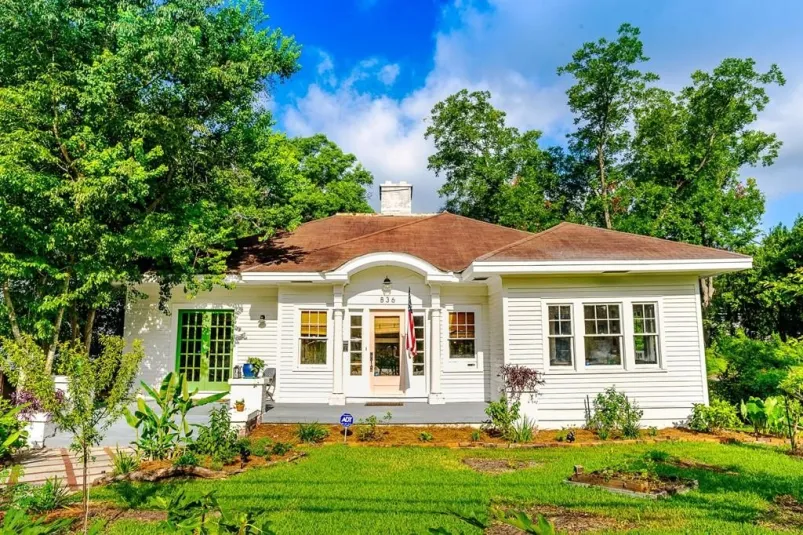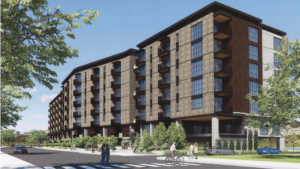Laurel, Mississippi, a small town nestled in the southeastern part of the state, has gained significant attention for its charming community, historic homes, and affordability. The town’s unique appeal has even inspired a popular television show, Home Town, which showcases its architecture and friendly atmosphere.
Yet, one question that often arises is: why are houses in Laurel so cheap compared to other parts of the country? This blog delves into the factors contributing to the affordability of homes in Laurel, providing a comprehensive understanding of the town’s housing market.
From economic conditions and demographics to local culture and historical influences, we explore the various elements that make Laurel an attractive option for those seeking affordable homeownership.
1. Economic Factors
One of the most significant reasons for the lower cost of homes in Laurel is the town’s economic landscape. Laurel is a small town with a local economy that doesn’t experience the same level of economic activity as larger cities. Here’s how the economy plays a role:
a. Income Levels
The median household income in Laurel is lower than the national average, reflecting the town’s modest economic conditions. Lower income levels naturally lead to lower home prices, as the housing market aligns with what the local population can afford.
b. Employment Opportunities
Laurel’s economy is primarily driven by industries such as manufacturing, healthcare, and retail. While these sectors provide stable employment, they don’t offer the high salaries found in tech hubs or financial centers. The availability of jobs in these sectors often results in a lower demand for high-priced homes, contributing to overall affordability.
c. Cost of Living
Laurel has a lower cost of living compared to many other parts of the country. Everything from groceries to utilities is more affordable, and this economic environment extends to the housing market. Lower living costs mean that homebuyers in Laurel can purchase properties at prices that would be considered a bargain elsewhere.
2. Demographic Influences
Demographics also play a crucial role in shaping the housing market in Laurel. The town’s population and its characteristics have a direct impact on the demand for housing.
a. Population Size and Growth
Laurel is a relatively small town with a stable population. Unlike rapidly growing urban areas where housing demand often drives up prices, Laurel’s population growth is slow and steady. This stability keeps housing prices from skyrocketing.
b. Aging Population
Laurel has a significant percentage of older residents, many of whom are retirees. An aging population often leads to a higher turnover of homes as older residents downsize or move to retirement communities. This turnover can increase the supply of homes on the market, keeping prices low.
c. Migration Patterns
Laurel does not experience the same level of inward migration as larger cities. With fewer people moving to the area, there’s less pressure on the housing market. This lack of demand from newcomers helps keep home prices more affordable.
3. Historical Context
The history of Laurel is rich and deeply intertwined with its current housing market. Understanding this history provides insight into why homes in the area are more affordable.
a. Industrial Roots
Laurel was once a booming industrial town, with the timber industry serving as a significant economic driver. As the industry declined, so did the town’s population and economic vibrancy. This decline in industrial activity left behind a surplus of homes, many of which are now available at lower prices.
b. Historic Homes
Laurel is known for its historic homes, many of which were built in the early 20th century. While these homes add to the town’s charm, they also require significant upkeep and renovation. The cost of maintaining or restoring these historic properties can deter potential buyers, contributing to lower home prices.
c. Urban Decay and Revitalization
Like many small towns, Laurel has experienced periods of urban decay, where certain neighborhoods fell into disrepair. Although there has been a recent push for revitalization, particularly due to the influence of Home Town, some areas are still in transition. This ongoing revitalization process can result in lower home prices as the market adjusts to the changing conditions.
4. Geographic and Environmental Factors
Laurel’s geographic location and environmental conditions also play a part in the affordability of housing.
a. Rural Setting
Laurel is situated in a rural part of Mississippi, away from major metropolitan areas. Its rural setting means that land is more readily available, and there is less competition for space. This abundance of land contributes to lower housing costs, as there’s no scarcity driving up prices.
b. Climate Considerations
The climate in Laurel is typically warm and humid, with hot summers and mild winters. While some people enjoy this climate, others may find it less appealing, particularly due to the potential for severe weather, such as hurricanes. These climate-related concerns can make the area less desirable to some buyers, which in turn keeps housing prices low.
5. Local Culture and Community
The culture and community of Laurel also influence its housing market. The town’s values, traditions, and lifestyle play a role in maintaining affordable home prices.
a. Small-Town Appeal
Laurel is the epitome of small-town America, where community and tradition are highly valued. While this creates a close-knit, friendly atmosphere, it also means that Laurel lacks some of the amenities and attractions of larger cities. This can make the town less appealing to people seeking a more urban lifestyle, contributing to lower housing demand and prices.
b. Community Investment
There’s a strong sense of community investment in Laurel, with local residents taking pride in their town. This investment has led to various efforts to improve the area, such as community-driven renovations and events. While these efforts enhance the town’s appeal, they haven’t yet translated into significantly higher home prices, partly because the community’s focus remains on preserving affordability.
c. Perceptions of Rural Life
Perceptions of rural life can also influence housing prices. For some, living in a small town like Laurel is ideal, offering peace, quiet, and a slower pace of life. For others, the lack of urban amenities, entertainment options, and job opportunities may be a drawback. These differing perceptions help maintain a balanced demand for housing, preventing prices from rising too high.
6. Government Policies and Regulations
Government policies at both the local and state levels can have a profound impact on housing prices. In Laurel, specific policies and regulations contribute to the affordability of homes.
a. Zoning Laws
Zoning laws in Laurel are relatively lenient, allowing for a mix of residential, commercial, and industrial properties. This flexibility in zoning can lead to a more diverse housing market, with options for various income levels. It also prevents artificial inflation of home prices by avoiding overly restrictive regulations.
b. Property Taxes
Mississippi has some of the lowest property taxes in the United States, and Laurel is no exception. Lower property taxes reduce the overall cost of homeownership, making it more accessible to a broader range of buyers. This affordability attracts potential homeowners looking for lower carrying costs.
c. Incentives for Development
The local government in Laurel has implemented various incentives to encourage development and investment in the town. These incentives include tax breaks and grants for renovating historic homes and building new properties. While these programs are designed to attract investment, they also help maintain affordability by increasing the supply of homes on the market.
7. The Influence of Media
The popularity of Laurel has grown significantly due to media exposure, particularly through the television show Home Town. However, this media attention has had a mixed impact on the housing market.
a. Increased Interest
Home Town has put Laurel on the map, attracting interest from people across the country. This increased interest has led to a slight uptick in home prices, as more people consider Laurel as a potential place to live. However, the prices have not spiked dramatically, as the overall economic and demographic factors still play a dominant role.
b. Perception vs. Reality
While the show paints an idyllic picture of life in Laurel, potential buyers must reconcile this with the reality of living in a small town. The show’s portrayal of affordable home renovations and community spirit is accurate, but it also highlights the challenges of maintaining historic homes and the slower pace of life. This balanced portrayal helps manage expectations and prevents an overwhelming surge in housing demand.
c. Sustained Affordability
Despite the attention, Laurel has managed to sustain its affordability. The local community and government have made efforts to ensure that the town remains accessible to both long-time residents and newcomers. This focus on preserving affordability, even in the face of increased media attention, has kept home prices from rising too quickly.
8. Comparative Analysis with Other Regions
To fully understand why houses are so cheap in Laurel, it’s helpful to compare the town with other regions, both within Mississippi and beyond.
a. Comparison with Urban Areas
Compared to urban areas like Jackson, Mississippi’s capital, or nearby cities like Hattiesburg, Laurel’s housing market is notably more affordable. Urban areas tend to have higher costs due to greater demand, more amenities, and higher income levels. In contrast, Laurel’s small-town setting and slower growth keep housing prices lower.
b. Comparison with Similar Towns
Even when compared to other small towns in Mississippi and neighboring states, Laurel stands out for its affordability. Many similar towns have experienced economic decline or population loss, leading to lower housing prices. However, Laurel’s unique combination of historic charm, community pride, and media exposure sets it apart, maintaining affordability while avoiding the pitfalls of economic decline.
c. National Comparisons
On a national level, Laurel’s housing prices are significantly lower than those in many other regions. While housing markets on the coasts or in booming metropolitan areas continue to soar, Laurel offers an alternative for those seeking affordable homeownership without sacrificing quality of life. This national perspective highlights the stark contrast between Laurel and more expensive markets, emphasizing the town’s unique appeal.
9. Future Prospects
Looking ahead, the future of Laurel’s housing market is shaped by several key factors that will determine whether prices remain affordable or begin to rise.
a. Economic Development
Continued efforts to boost the local economy, such as attracting new businesses and improving infrastructure, could lead to gradual increases in home prices. However, if these developments are managed carefully, Laurel can maintain its affordability while still growing.
b. Population Changes
If Laurel experiences a significant influx of new residents, whether due to continued media attention or economic opportunities, housing demand could rise, pushing prices higher. However, given the town’s current population trends, any changes are likely to be gradual.
c. Community Preservation
The town’s commitment to preserving its historic character and small-town charm will play a crucial role in maintaining affordable housing. By focusing on sustainable growth and community-driven development, Laurel can continue to offer affordable homes without compromising its identity.
Conclusion
Laurel, Mississippi, offers a unique blend of affordability, charm, and community that sets it apart from many other towns and cities. The reasons for the town’s affordable housing market are multifaceted, ranging from economic and demographic factors to historical influences and media exposure. While Laurel’s homes remain accessible to a wide range of buyers, the town’s future will depend on how it balances growth and preservation. For those seeking an affordable, small-town lifestyle with a rich history and a strong sense of community, Laurel remains an attractive option. Whether you’re looking to buy a home or simply curious about this charming town, understanding the factors that keep Laurel’s housing market affordable provides valuable insight into what makes this Mississippi gem so special.


